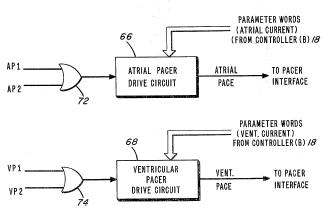Cardiac Pacemakers (CPI) v. St. Jude Medical
(Fed. Cir. 2004).
CPI (Guidant) controls several patents relating to implantable cardiac defibrillators (ICDs) that are permanently installed under the skin, and that determine abnormal cardiac activity and treat that activity by delivering electrical shocks to the heart muscle in appropriate strengths. CPI charged St. Jude with infringement of two of these patents.
A jury found both patents valid and enforceable, but only one infringed. After trial, the district court granted St. Jude’s motions for JMOL — holding both patents invalid and not infringed. The court also granted a new trial (in the event of reversal) and awarded sanctions for witness misconduct. CPI appealed the judgment of invalidity and non-infringement.
The Appellate Panel agreed with CPI and reversed, finding that the district court improperly granted JMOL. With respect to obviousness, the Federal Circuit found a nonobvious difference between the prior art’s recognition of a problem and the patented solution.
We think that the district court, in granting JMOL, applied an incorrect standard to the ultimate question. Recognition of the problem of treating complex heart arrhythmias does not render obvious the eventual solution. Recognition of a need does not render obvious the achievement that meets that need. There is an important distinction between the general motivation to cure an uncured disease (for example, the disease of multiple forms of heart irregularity), and the motivation to create a particular cure.
The lower court had also invalidated the patent based on a failure to state a best mode for supplying batteries. However, the Appellate panel found that there was “evidence before the jury that persons knowledgeable in the field of the invention would know the sources of batteries for pacemakers and related devices. There was no evidence of concealment, and the jury had evidence that the Honeywell battery was published in a publication for battery specialists. There was substantial evidence whereby a reasonable jury could have found that the best mode requirement had not been violated. The grant of JMOL on this issue is reversed, and the jury verdict is reinstated.”
The Appellate Panel continued: “The jury verdicts on the issues of obviousness and best mode were not against the manifest weight of the evidence.” Thus, no new trial may be held on the issues of obviousness or best mode. However, a new trial was warranted with respect to infringement because the district court erred in its claim construction.
AFFIRMED IN PART, REVERSED IN PART, AND REMANDED.
Update:
Peter Zura at the 271 Patent Blog has more information on the case.
Reuters story.
